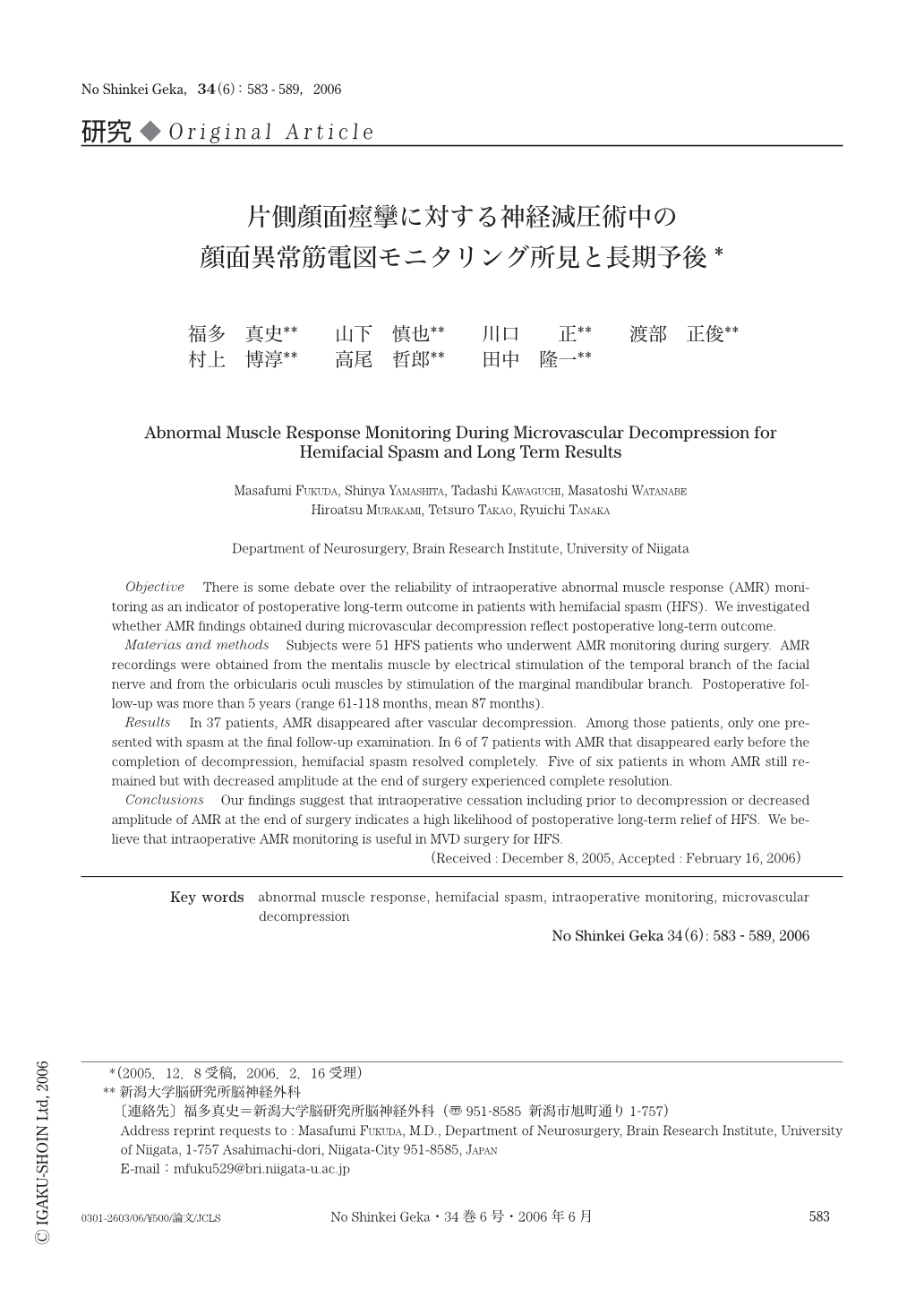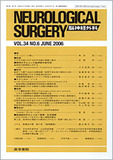Japanese
English
- 有料閲覧
- Abstract 文献概要
- 1ページ目 Look Inside
- 参考文献 Reference
Ⅰ.は じ め に
片側顔面痙攣に対する微小血管減圧術中の顔面異常筋電図(abnormal muscle response,以下AMR)は術後の症状消失を予測する術中モニタリングとして用いられているが,その有用性については賛否が分かれている2,3,6,7,10-12).特に減圧操作前の早期にAMRが消失したり,解剖学的に確実に減圧操作が完了したと判断された場合でもAMRが残存したりする症例があり,これらがモニタリングとしての有用性に疑問を投じる原因となっている.最近,われわれは60例のAMRモニタリング症例を検討し術後の予後を予測するうえでの有用性について報告した20).今回60例の症例中術後5年以上観察できた症例を分析し,術中AMRモニタリング所見,特に早期消失例および残存例と長期予後との関係について検討した.
Objective There is some debate over the reliability of intraoperative abnormal muscle response (AMR) monitoring as an indicator of postoperative long-term outcome in patients with hemifacial spasm (HFS). We investigated whether AMR findings obtained during microvascular decompression reflect postoperative long-term outcome.
Materias and methods Subjects were 51 HFS patients who underwent AMR monitoring during surgery. AMR recordings were obtained from the mentalis muscle by electrical stimulation of the temporal branch of the facial nerve and from the orbicularis oculi muscles by stimulation of the marginal mandibular branch. Postoperative follow-up was more than 5 years (range 61-118 months,mean 87 months).
Results In 37 patients,AMR disappeared after vascular decompression. Among those patients,only one presented with spasm at the final follow-up examination. In 6 of 7 patients with AMR that disappeared early before the completion of decompression,hemifacial spasm resolved completely. Five of six patients in whom AMR still remained but with decreased amplitude at the end of surgery experienced complete resolution.
Conclusions Our findings suggest that intraoperative cessation including prior to decompression or decreased amplitude of AMR at the end of surgery indicates a high likelihood of postoperative long-term relief of HFS. We believe that intraoperative AMR monitoring is useful in MVD surgery for HFS.

Copyright © 2006, Igaku-Shoin Ltd. All rights reserved.


